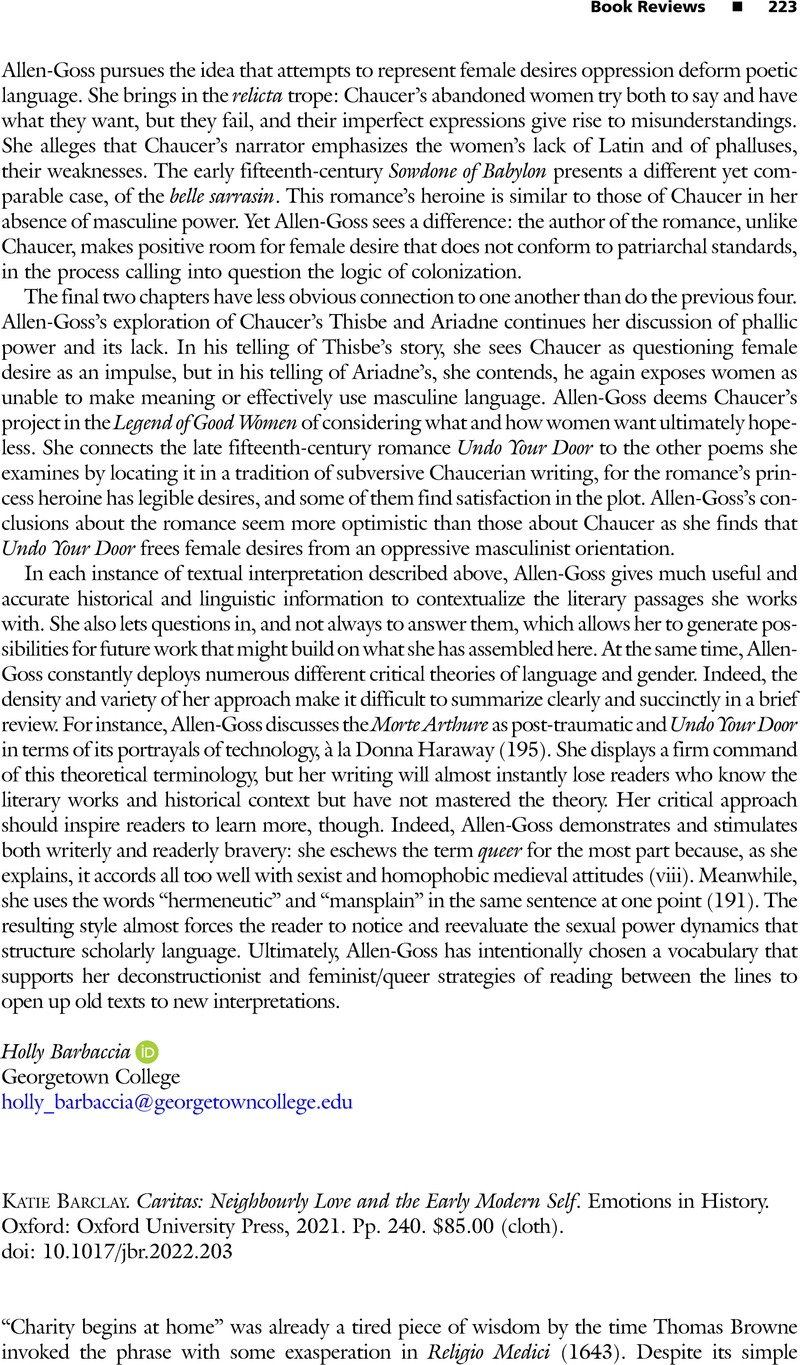No CrossRef data available.
Article contents
Katie Barclay. Caritas: Neighbourly Love and the Early Modern Self. Emotions in History. Oxford: Oxford University Press, 2021. Pp. 240. $85.00 (cloth).
Review products
Katie Barclay. Caritas: Neighbourly Love and the Early Modern Self. Emotions in History. Oxford: Oxford University Press, 2021. Pp. 240. $85.00 (cloth).
Published online by Cambridge University Press: 03 March 2023
Abstract
An abstract is not available for this content so a preview has been provided. Please use the Get access link above for information on how to access this content.

- Type
- Book Review
- Information
- Copyright
- Copyright © The Author(s), 2023. published by Cambridge University Press on behalf of the North American Conference on British Studies



